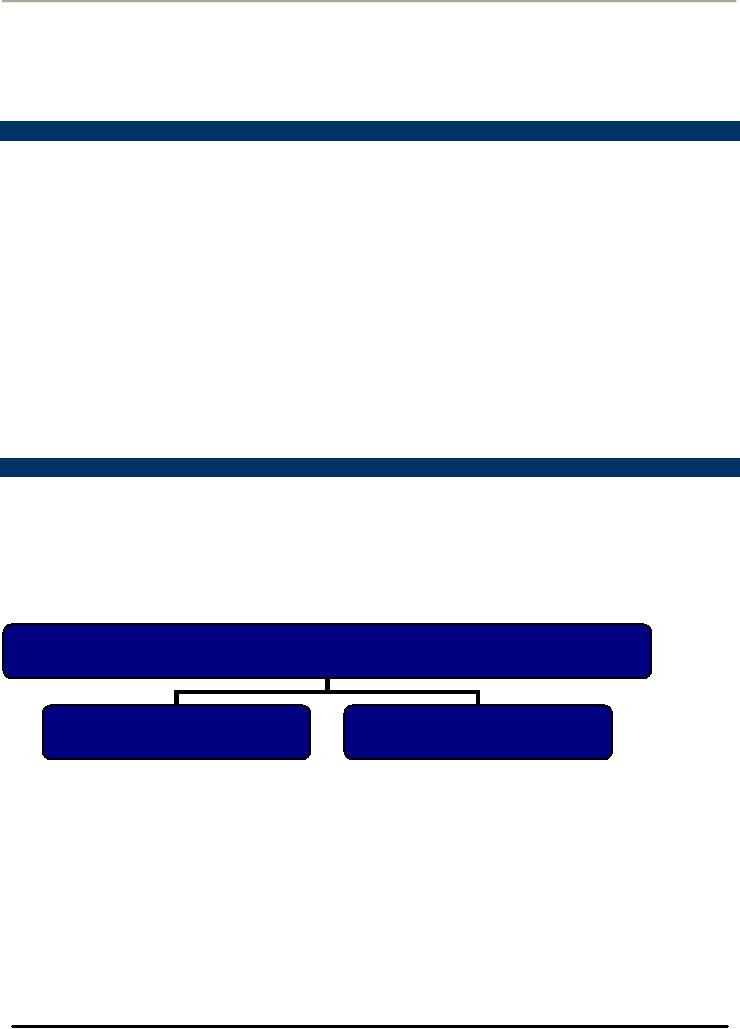 |

Consumer
Psychology (PSY -
514)
VU
Lesson17
MARKET
SEGMENTATION
IMPLEMENTING
SEGMENTATION STRATEGIES
ENVIRONMENTAL
INFLUENCES
CULTURE
1.
Criteria for Effective Targeting of
Market Segments
To
be an effective target market a segment
should be:
Identifiable
Sufficient
(in terms of size)
Stable
or growing
Accessible
in terms of both media and
cost
To
divide the market into
separate segments on the basis of
common
or shared needs
or characteristics that
are
relevant
to the product or service, a marketer
must be able to identify the relevant
characteristics. Variables such as
Geography
(location) and Demography (age, gender,
occupation, race) are easy to
identify. Education, income
and
marital
status can be known through
questionnaires. Other characteristics
such as benefits
sought and
lifestyles
are
more
difficult to identify
Most
marketers prefer to target segments
that are relatively stable in
terms of demographic and
psychological
factors
and are likely to grow
larger over time. Teenagers
are sizable and easily
identifiable market, eager to
buy,
able
to spend and easily
reachable, yet when a marketer
produces merchandise for a
popular teenage fad, interest
in
it
may have waned
2.
Implementing Segmentation
Strategies
Once
an organization has identified it most
promising segments it must decide whether
to target one segment
or
several
segments.
Each
targeted segment receives a
specially designed marketing mix
i.e. a specially tailored
product, price,
distribution
network and/or promotional
campaign
Segmentation
Implementing Strategies
Differentiated
Marketing
Concentrated
Marketing
Targeting
several segments
Targeting
just one segment
Differentiated
Marketing is
highly appropriate for:
�
Financially
strong companies
�
Well
established in a product
category
�
Competitive
with other firms that are
also strong in the category
(soft drinks, automobiles or
detergents)
Concentrated
Marketing is an appropriate
strategy when:
�
A
company is small or new to the
field
�
A
company can survive and
prosper by filling a niche
not occupied by stronger
companies
�
Gum
disease fighting
toothpastes
58

Consumer
Psychology (PSY -
514)
VU
3.
Countersegmentation
Some
segments concentrate over time to a
point where they don't warrant an
individually designed marketing
program
In
Countersegmentation a company seeks
more generic needs or
consumer characteristics that
would apply to the
members
of two or more segments into
a larger single segment that
could be targeted with individually
tailored
product
or promotional campaign
Example
Some
business schools with wide
course offerings in each department
were forced to use
Countersegmentation
strategy
when they discovered that
students simply did not have
enough available credits to take a
full spectrum of
in
depth courses in their major
areas of studies. They had to
use Countersegmentation, e.g. by
combining
advertising,
publicity, sales promotion
and selling course into a
single course called
promotion
Key
Terms of Chapter 3
AIO's
(activities, interests,
opinions)
Market
Segmentation
Benefit
Segmentation
Positioning
Concentrated
Marketing
Psychographic
Inventory
Countersegmentation
Psychographic
Segmentation
Demographic
Characteristics
Sociocultural
Variables
Demographic
Segmentation
Use
related segmentation
Differentiated
Marketing
Usage
situation
Geographic
Segmentation
Hybrid
Segmentation
Mass
Marketing
Environmental
Influences
Contents:
Culture
�
What is Culture
�
How Culture is
Learnt
�
Enculturation and
Acculturation
�
Language and
Symbols
�
Rituals
�
Dynamic Culture
�
Measurement of Culture
�
Subculture
�
Nationality subculture
�
Age subculture
�
Sex as subculture
Social
Class
�
What is Social
Class
�
Measurement of Social
Class
�
The Affluent
Consumer
�
Middle Class
Consumers
59

Consumer
Psychology (PSY -
514)
VU
�
Working
Class and other non-Affluent
Consumers
Social
Groups
�
Consumer Related Reference
Groups
�
Groups
�
Family
The
study of culture
The
study of culture is a challenging undertaking
because its primary focus is the
broadest component of social
behavior
an
entire society
The
Influence of Culture on Consumer
Behavior
Culture
is broad and pervasive and given
its very nature It generally
requires detailed examination of the
character
of
the total society. This
includes factors that give a
society its distinct flavor
such as:
�
Language
�
Knowledge
�
Laws religions
�
Foods
�
Customs
�
Music
�
Art
�
Technology
�
Work patterns
�
Products
�
Artifacts
Culture
is a society's personality
Beliefs
and Values
Beliefs
and values component of our
definition refers to accumulated
feelings and priorities that
individuals have
about
"things" and
possessions
The
Belief Component
Beliefs
consist of a very large number of verbal
and mental statements.
Beliefs reflect a person's
particular:
�
Knowledge or
�
Assessment of something
�
another person (people who come
from the mountains are tough
)
�
A store (A certain chain of
store)
�
A product (a certain product,
having a car is the sign of
affluence)
�
A brand (A certain brand is much better
than the other)
The
Values Component
Values
are also beliefs. Values
meet the following criteria:
�
Relatively few in number
�
Serve as guide for
culturally appropriate behavior
�
Enduring and difficult to
change
�
Not tied to specific
objects or situations
�
Widely accepted by the members of
society
The
Customs Component
Overt
modes of behavior that constitute
culturally approved or acceptable ways of
behaving in specific situations.
Customs
consist of everyday routine
behavior of the consumer
�
Diet sweetener for
coffee
�
Putting ketchup in a burger
60

Consumer
Psychology (PSY -
514)
VU
�
Eating
sweet after the main
course
Where
beliefs and Values are
guides for behavior, customs
are usual and acceptable
ways of behaving
Broad
Sense
Values
and beliefs are mental
images that
affect a wide range of
specific attitudes that
in turn influence the
way
a person is likely to respond in a
specific situation
xample:
the criteria a person uses to evaluate
alternative brands in a particular product
category:
�
Preference for one of
these brands influenced by both a
person's general
values (what
constitutes quality, the
meaning
of a country of origin)
�
Specific
beliefs
perceptions about the quality of
Chinese made products and the
quality of American
products.
61
Table of Contents:
- INTRODUCTION TO CONSUMER PSYCHOLOGY:Consumer Behavior
- INTRODUCTION TO CONSUMER PSYCHOLOGY:Consumer research
- INTRODUCTION TO CONSUMER PSYCHOLOGY:Marketing Mix, Product, Price
- INTRODUCTION TO CONSUMER PSYCHOLOGY:Customer Value, Perceived Value
- VALUE AND RETENTION FOCUSED MARKETING AND CONSUMER DECISION MAKING PROCESS
- CONSUMER RESEARCH:Quantitative Research, Qualitative Research
- MAJOR STEPS IN CONSUMER RESEARCH PROCESS:Design of Primary research
- QUANTITATIVE RESEARCH DESIGNS & DATA COLLECTION METHODS
- QUANTITATIVE RESEARCH DATA COLLECTION TECHNIQUES:ATTITUDE SCALES
- QUALITATIVE RESEARCH DESIGNS & DATA COLLECTION METHODS
- CUSTOMER SATISFACTION MEASUREMENT, SAMPLING, AND DATA ANALYSIS AND REPORTING
- MARKET SEGMENTATION AND ITS BASES:Geographical Segmentation
- BASES FOR SEGMENTATION: DEMOGRAPHIC SEGMENTATION PSYCHOGRAPHIC SEGMENTATION
- BASES FOR SEGMENTATION: SOCIOCULTURAL SEGMENTATION USE RELATED SEGMENTATION USAGE SITUATION SEGMENTATION
- BASES FOR SEGMENTATION: BENEFIT SEGMENTATION:Intrinsic Cues
- BASES FOR SEGMENTATION: HYBRID SEGMENTATION STRATEGIES
- MARKET SEGMENTATION IMPLEMENTING SEGMENTATION STRATEGIES ENVIRONMENTAL INFLUENCES CULTURE
- HOW CULTURE IS LEARNT ENVIRONMENTAL INFLUENCES:Formal Learning
- CULTURE AND ITS MEASUREMENT ENVIRONMENTAL INFLUENCES
- MEASUREMENT OF CULTURE ENVIRONMENTAL INFLUENCES:Consumer Fieldwork
- SUBCULTURE CHAPTER 4: ENVIRONMENTAL INFLUENCES
- AGE AND GENDER SUBCULTURE CHAPTER 4: ENVIRONMENTAL INFLUENCES
- BASES FOR SEGMENTATION: BENEFIT SEGMENTATION:Market Segmentation
- SOCIAL CLASS CHAPTER 4: ENVIRONMENTAL INFLUENCES:Occupation
- CONSUMER SOCIAL CLASSES CHAPTER 4: ENVIRONMENTAL INFLUENCES:Affluent Consumer
- CONSUMER SOCIAL CLASSES CHAPTER 4: ENVIRONMENTAL INFLUENCES:Membership Group
- CONSUMER SOCIAL CLASSES CHAPTER 4: ENVIRONMENTAL INFLUENCES:Shopping Groups
- UNDERSTANDING PERSONALITY CHAPTER 5: INDIVIDUAL DETERMINANTS OF CONSUMER BEHAVIOR
- CONSUMER PERSONALITY, TRAIT THEORY AND SELF IMAGES
- CONSUMER MOTIVATION:Needs, Goals, Generic Goals
- UNDERSTANDING LEARNING:Intentional and Incidental Learning, Implications for Marketers
- INSTRUMENTAL CONDITIONING, INFORMATION PROCESSING AND MEMORY
- ATTITUDES:Characteristics of Attitudes, Attitudes have consistency
- ATTITUDE FORMATION AND CHANGE:How attitudes are learned?
- ATTITUDE CHANGE STRATEGIES:Resolving two conflicting attitudes
- INTRODUCTION TO CONSUMER DECISION MAKING:Decision Complexity
- Problem Recognition, Search and Evaluation and Decision and Purchase
- Decision and Purchase:Consumer Decision Rules, Output, Relationship Marketing
- Decisions Related to Post Purchase:Product Set up and Use
- Marketing Implications of Decisions Related to Post Purchase:Understanding
- Post Purchase Evaluation:Determinants of Satisfaction, Consumer Complaint Behavior
- Post Purchase Dissonance:Dissonance Reduction, Marketing Implications
- Consumerism:Roots of Consumerism, The Nature of Consumerism
- Consumerism – Issues and Responses:Environmental Concerns, Consumer Privacy
- Review – Consumer Psychology Course:Consumer Research, Consumerism